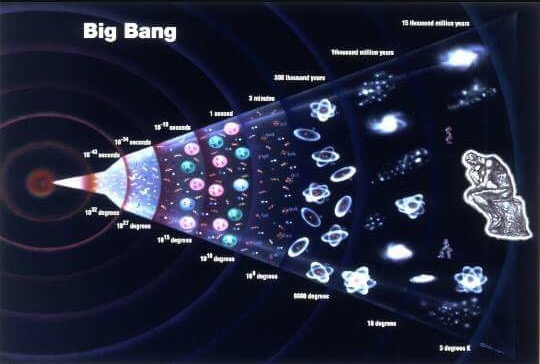I'm What Lies Between the Stars?
In the last post we discussed how the stars came to be following the Big Bang. Stars are not all similiar and like every good thing in life, there is variety and diversity in the fabric of space that our stars are embedded in. Lads and lasses take note, when you are having a romantic gaze at the stars with a significant other you will now be about to impress with your knowledge of the stars.It is time to fast forward to the present day. Stars rule the night sky, planets are orbiting most of these stars and more stars are coming through star formation via the interstellar gas clouds and going when the nuclear fusion of hydrogen to helium in the core is no longer possible. The North Star or Polaris, as it is technically called, is not the brightest star in the night sky. It is actually between the 47th and 49th brightest star depending on the time of the year. The brightest star title actually belongs to Sirius, a binary system of a main star and a neutron star as its companion in orbit. A neutron star is the left over core of a star that has experienced supernova and the core is made entirely of neutrons. Neutron stars are incredibly bright whilst being tiny and dense. Most neutron stars are only 11km or 7 miles in diameter although have a mass of double that of our own sun. A spoonful of the neutrons that make up a neutron star would weigh around 13 million tonnes!
For technical purposes we could actually say that the sun is the brightest star in our sky however the star that is nearest is not always the brightest. Basic physics and chemistry tell us this. The higher the energy, the higher the heat and brighter the star will appear as the luminosity in joules or watts is higher. These pretty lights in the sky give us clues as to how far away they are, chemical composition and their orbits. Magnitude is the unit of which we measure how bright a star appears to us on the Earth whereas luminosity measures how much energy the star emits. Our own planets in our solar system can appear to have a higher magnitude than stars because they are much closer to us. Jupiter, Saturn, Venus, Mars and Mercury are visible to the naked eye and are all very striking through a telescope and easy to find.
 There is a varied range of stars; protostars which are in their infancy and not fully formed, main sequence stars which are in a state of equilibrium as gravity is pulling the star circularly inward and the fusion reaction of hydrogen to helium pushes it outward. Keeping it spherical. Our sun is a main sequence star and a good majority of stars in the sky are main sequence. Stars also evolve, when a star's fusion reaction occurs quicker than gravitation pull can keep it inward, the star begins to grow and can evolve into a red giant or a supermassive red giant until the reaction can no longer be sustained and kaboom!
There is a varied range of stars; protostars which are in their infancy and not fully formed, main sequence stars which are in a state of equilibrium as gravity is pulling the star circularly inward and the fusion reaction of hydrogen to helium pushes it outward. Keeping it spherical. Our sun is a main sequence star and a good majority of stars in the sky are main sequence. Stars also evolve, when a star's fusion reaction occurs quicker than gravitation pull can keep it inward, the star begins to grow and can evolve into a red giant or a supermassive red giant until the reaction can no longer be sustained and kaboom!
We are the era of stars, there are more stars in our universe than there are grains of sand in every beach in the world combined. So what lies between these stars? First of all the space between stars is not empty. Space isn't just vast patches of nothing in between the visible matter of stars, planets, galaxies etc. There is a fabric of space that all of these objects sit in. The best way to describe this is imagining the universe as a giant mattress and heavy objects like planets, stars and galaxies sitting on the mattress cause the mattress to bend and curve.
The heavier the object, the more it warps and curves the space around it. This was proposed and confirmed via scientific observations proposed by Albert Einstein which we will get to in another post.
The visible things we can see in the universe only account for around 5% of all matter in the cosmos. So where is everything else you may ask? If we can only see 5% then where is the rest of it? This has been a loose introduction to astronomy and astrophysics. Be prepared as next week we are going to discuss some very VERY dark matter!
Brought to you by Jude Morrow. Edited by Amy King.
Images by: Universe today and Washington university respectively.





